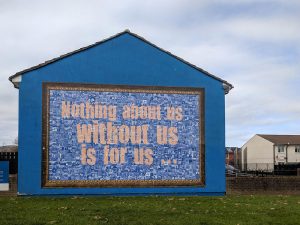
My previous column set the context for these additional strategies. Please do not launch these strategies without reading the previous column. You need the background and the context.
And here are some strategies:
- Create your organization’s story together. Through a series of board conversations, collect stories about why they care and why they give. Yes, the staff (or a professional writer) actually drafts the copy. But engaging board members in defining why your organization matters and which stories resonate is a great involvement tool.
- With the board, define priorities for funding.This is, of course, the annual budgeting process.
- Require every board member to make a personal financial contribution.Personal ability and level of interest drive gift size. (And if you serve on a board, then your gift to that organization should be one of your most significant gifts.)
- Require that every board member help identify those who might be interested in your organization. Every board member helps identify those who might be interested in the organization. Board members do this over and over, forever.
- Require every board member to help nurture relationships with qualified prospects and current donors. No board member does everything. But every board member does something.
- Board members can call donors to thank them for their gifts. This is just a thank-you call, not a prelude to another request.
- Ask some board members to help solicit. Do not expect that every board member will be comfortable doing this, but some will. And some will get comfortable as time passes.
- Board members can write personal notes on direct mail solicitations. The board member needn’t know the letter recipient. They just write a note: “Thank you for your support. I hope you’ll consider giving again.” And sign it, “Mary Smith, board member.”
- Invite a board member to share stories with you on a solicitation call.
- Board members can also go together or alone and personally solicit gifts.
Often, it’s a struggle to get the board and its members to fulfill fundraising obligations. There’s discomfort, awkwardness, fear, and lack of knowledge. But staff, partnered with the fund development committee, helps fix all this.
Myths and bad fundraising proliferate, reinforcing discomfort, awkwardness, and fear. But competent staff, effectively using the fund development committee, counter myths and ensure good practice.
Leaders help board members understand the value that they add to philanthropy and fund development. Leaders know this won’t be fun—and they don’t sell fun. Leaders help make it easier, or at least less bad, for board members. Leaders help board members care enough to overcome personal discomfort and convenience to work for the good of the organization.
A board member—often the chair—solicits her fellow board members. Personalize the request to each board member, based on his or her financial capacity. For example, you might ask Bob for $25. Bob is the single father of six kids. He works in the kitchen of the public school system. On the other hand, Mary is the head of that big corporation in town. You ask Mary for more—lots more.
A big reminder: Do not ask (or expect) your board members to trespass on their personal and professional relationships. Sure, Mary, the head of the big corporation, is on your board. Yes, she does business with corporations and corporate executives. As a board member, Mary identifies those who might be interested in your cause—and Mary facilitates an introduction. Mary does not ask for favors from those she knows. Favor exchanges produce short-term money and bad feelings.
Sign up for our free newsletters
Subscribe to NPQ's newsletters to have our top stories delivered directly to your inbox.
By signing up, you agree to our privacy policy and terms of use, and to receive messages from NPQ and our partners.
Board members make every effort to attend your organization’s programs and fundraising events. At the event, board members schmooze with guests. Board members do not hang out with their friends and dates. Instead, board members mingle and greet people, engage in conversation, and listen to guests. Then board members share what they’ve learned with staff.
See the various resources in the Free Download Library on my website. Check out my previous columns here at NPQ. Start now. Add more. And keep going.













